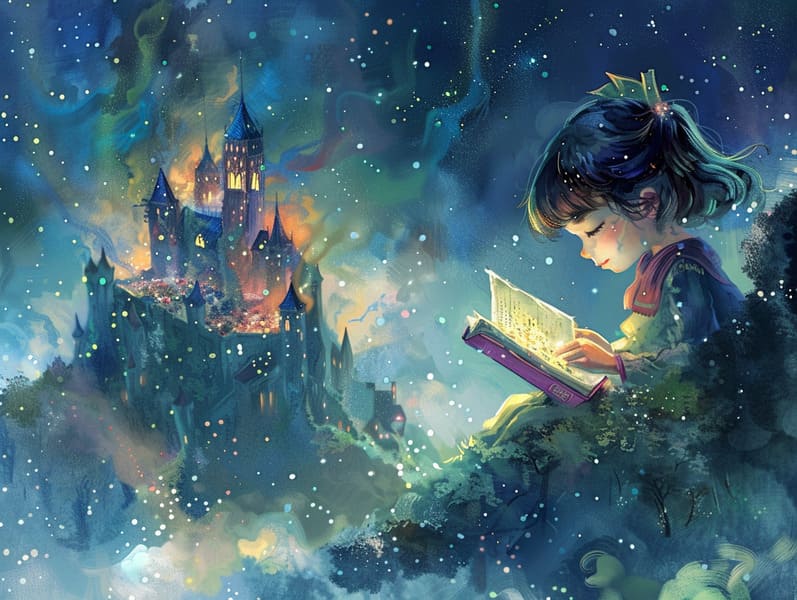The Emergence of Fairy Tales for Kids with Their Immortal Delight.
The Emergence of Fairy Tales for Kids with Their Immortal Delight.
Blog Article

Popular fairy tales have enduring presence. These narratives have been whispered from one generation to the next long before they were ever put on paper. They originated from a variety of traditions, including Indigenous traditions. They were initially disseminated among adults, often carrying themes and messages relevant to the societal norms and beliefs of the time.
The renowned Brothers Grimm, Jacob and Wilhelm Grimm, were among the first to compile many of these beloved tales. Their compilation, "Grimm's Fables," included narratives like "Ashenputtel," "The Story of Hansel and Gretel," and "Schneewittchen," which have since become essentials in the world of timeless fairy tales. Similarly, H. C. Andersen's whimsical narratives, such as "The Mermaid," and "The Story of the Ugly Duckling," have won hearts worldwide, cementing their place in the pantheon of iconic fairy tales.
Though they are centuries old, classic fairy tales remain as meaningful as ever, especially as children's night stories. These fantastical tales are now available in different formats, including richly illustrated books, enchanting animations, and online storybooks.
Their unwavering allure can be attributed to several whimsical characteristics:
Key Lessons: Ancient fairy tales often share important moral lessons. Narratives like "The Shepherd Boy and the Wolf" teach the value of sincerity, while "The Tortoise and the Hare" exemplify the virtues of determination and humbleness. These tales offer young ones clear distinctions between right and wrong, helping to shape their moral compass in a mild yet deep way.
Sympathy and Perception: Traditional fairy tales frequently include heroes facing difficulties and adversities, inciting children to relate with their struggles and rally behind their triumphs. For instance, "The Tale of Beauty and the Beast" demonstrates the necessity of seeing beyond looks to realize the inner spirit of a being, cultivating warmth and knowledge.
Cultural Appreciation: Many timeless fairy tales are steeped in the cultural contexts from which they grew. Delving into these tales can provide illuminating insights into different cultures, encouraging a sense of cultural understanding and awareness.
Fantasy and Imagination: The fanciful elements in old fairy tales—enchanted forests—unleash children’s visions and dreams. These narratives lead readers to mythical realms, encouraging imaginative thinking and a sense of amazement that remains a lifetime.
Ancient fairy tales are not only enchanting but also edifying. They serve as captivating tools in building various mind and heart abilities in children. When old fairy tales are read aloud, they strengthen communication skills by offering new terms and intricate sentence structures. This practice also cultivates hearing perception and mental focus, as children stay focused, keen to see what happens next.
Furthermore, analyzing the themes and characters of old fairy tales can develop intellectual skills and cognitive skills. Kids learn to discern patterns, foresee events, and understand cause and effect. These examinations also further little ones express their thoughts and feelings, strengthening their emotional intelligence.
In today’s electronic age, the abundance of online storybooks has made these stories more reachable than ever. Online resources and software present wide arrays of timeless fairy tales that can be accessed or listened via anytime, anywhere. Fairy tales voiced are particularly popular, presenting an delightful method for children to take part in these captivating stories. Read-aloud books and read-out-loud stories bring characters and settings to life, often supplemented by bewitching background sounds and songs that boost the story get more info adventure.
The unfading fascination of classic fairy tales lies in their ability to modify to contemporary times while holding onto their core messages. Contemporary versions of these fairy tales often integrate more representative characters and modern settings, making them understandable to today’s audience. However, the underlying themes of fortitude, warmth, and justness remain unchanged, continuing to move listeners of all ages.
Fairy tales also offer a sense of contentment and predictability. They deliver a well-structured narrative with a unmistakable beginning, middle, and end, often drawing to a close with the solving of conflicts and the triumph of morality over wickedness. This dependability can be encouraging for kids, proffering a sense of solidity in an inconstant world.
Classic fairy tales continue to bewitch and edify new generations, maintaining their radiance and value in modern society. As bedtime stories for kids, they present to a perfect blend of delight and instruction, nourishing moral values, empathy, and creativity. The availability of online storybooks and the well-received status of fairy tales voiced confirm that these traditional fairy tales remain acquirable to new generations.
By guarding and telling these tales, we continue to recognize the rich tapestry of mythology and cultural heritage. Whether you are experiencing a colorful picture book, accessing a internet library, or listening to an spoken story, the grace of Grimm's fairy tales is always within reach. These stories illustrate of the undying effect of fairy tales and its ability to bind us across eras and regions.
If you are perusing a vibrantly illustrated book, discovering a virtual collection, or listening via an read-aloud story, the beauty of famous fairy tales is always within reach.
These fairy tales emphasize of the persistent influence of storytelling and its ability to bind us across eras and regions, establishing a link that enchants and educates alike.